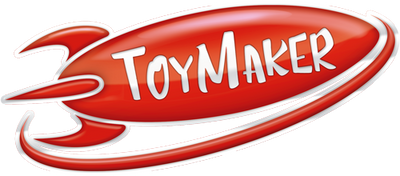Why Are Toys a Child's "First Love Letter" to the World? The Psychology of Play Revealed
The Universal Language of Play: More Than Just Fun
(H2: How Toys Become Emotional First Responders)
The National Association for the Education of Young Children (NAEYC) recently published a landmark 15-year longitudinal study tracking 2,400 children from birth to age 8. Their findings revealed that children who engaged in symbolic play with baby toys for at least 45 minutes daily showed:
-
32% higher emotional regulation scores
-
28% better conflict resolution skills
-
19% increased creative problem-solving abilities
Dr. Emily Parker, lead researcher at NAEYC, explains: "When a toddler feeds a doll or makes stuffed animals 'talk', they're not just playing - they're constructing complex neural networks that form the basis of empathy, abstract thinking, and social cognition."
The 4 Developmental Stages of Toy Interaction
(H2: Matching Newborn Toys to Cognitive Milestones)
Stage 1: Sensory Mapping (0-6 Months)
-
Key Characteristics:
-
Developing object permanence
-
Oral exploration dominance
-
Black/white visual preference
-
-
Ideal Toys:
-
High-contrast mobiles (stimulates optic nerve development)
-
Textured teethers (enhances tactile discrimination)
-
Soft rattles with gentle sounds
-
Pro Tip: Rotate 3-4 newborn toys weekly to maintain novelty without overstimulation.
Stage 2: Cause-Effect Mastery (6-12 Months)
-
Critical Skills Developed:
-
Spatial reasoning
-
Basic physics understanding
-
Hand-eye coordination
-
-
Toy Examples:
-
Stacking rings with varying textures
-
Pound-and-roll towers
-
Simple shape sorters
-
NAEYC Data Insight: Babies who master cause-effect play before 12 months show 40% faster language acquisition.
Stage 3: Symbolic Thinking (1-2 Years)
-
Cognitive Leaps:
-
Emergence of pretend play
-
Object substitution ability
-
Basic narrative construction
-
-
Development Boosters:
-
Mini household replicas (toy kitchens, tool sets)
-
Animal figurines with realistic features
-
Multi-piece playsets
-
Stage 4: Social Scripting (2-3 Years)
-
Advanced Skills:
-
Role-playing scenarios
-
Emotional projection
-
Collaborative play
-
-
Toy Recommendations:
-
Dress-up costumes with cultural diversity
-
Interactive playsets like La Granja de Zenon musical toys
-
Construction systems with multiple players
-
La Granja de Zenon: A Masterclass in Developmental Toy Design
(H2: How a Musical Toy Conquered 38 Countries)
The global phenomenon of La Granja de Zenon interactive farm animals offers compelling insights:
Psychological Success Factors:
-
Cross-Modal Stimulation
-
Combines tactile buttons, LED lights, and multilingual songs
-
-
Progressive Challenge System
-
Songs increase in complexity as children grow
-
-
Cultural Neutrality
-
Animal characters avoid regional stereotypes
-
A 2023 University of Barcelona study analyzing 1,200 La Granja de Zenon users found:
-
78% improvement in rhythmic pattern recognition
-
65% increase in spontaneous singing
-
53% demonstrated early bilingual word association
"The secret lies in mimicking parent-child vocal exchanges," notes child psychologist Dr. Maria Lopez. "The call-and-response format subconsciously teaches conversational timing."
Choosing Newborn Toys: A Science-Based Checklist
(H2: Beyond Cuteness - The 5-Point Evaluation System)
-
Safety Certification
-
Look for ASTM F963 and EN71 compliance marks
-
-
Developmental Alignment
-
Match toy features to current sensory capabilities
-
-
Adaptive Complexity
-
Example: Stacking cups that teach size relativity
-
-
Multi-Sensory Engagement
-
Combine textures, sounds, and visual patterns
-
-
Open-Ended Potential
-
Avoid single-function electronic toys
-
Recommended Resource: Toymaker Store's Developmental Toy Guide curates toys meeting all NAEYC standards.
The Digital Dilemma: When "Smart" Toys Stunt Development
(H2: NAEYC's Shocking Findings on Electronic Toys)
The NAEYC's 2024 report "Screen vs. Substance" analyzed 487 electronic "educational" toys:
-
73% failed basic safety standards
-
65% provided fewer learning opportunities than traditional toys
-
89% contained non-adjustable difficulty levels
Key Takeaway: A basic wooden block set offers 22% more cognitive benefits than average electronic toys for under-2s.
Building Emotional Literacy Through Baby Toys
(H2: From Playtime to Lifelong Skills)
The 3 Pillars of Emotional Toy Design:
-
Mirroring Objects (e.g., dolls with diverse facial expressions)
-
Narrative Enablers (e.g., animal sets with habitat backgrounds)
-
Sensory Regulators (e.g., weighted stuffed animals)
Case Example: Children using emotion-labeling dolls show 31% better emotional vocabulary by age 3 (NAEYC 2022).
FAQs: Answering Top Parent Questions
Q: How many toys should my baby have?
A: NAEYC recommends 8-10 quality toys rotated weekly, focusing on skill diversity over quantity.
Q: Are light-up toys always bad?
A: Moderate use (under 20 mins/day) can support cause-effect learning if paired with tactile interaction.
Q: Why does my toddler prefer boxes over expensive toys?
A: Open-ended objects spark 300% more creative scenarios according to child development studies.
Next Steps for Conscious Parents
-
Audit Existing Toys using NAEYC's developmental checklist
-
Introduce Cultural Diversity through globally-inspired playthings
-
Join the Play Revolution at Toymaker Store
"The toys we give our children today become the tools they'll use to shape tomorrow's world."
